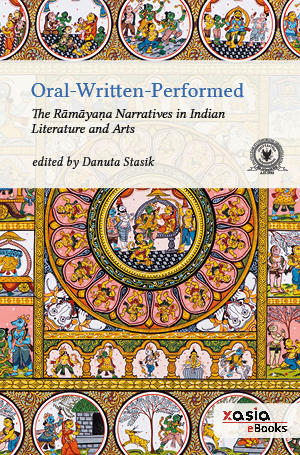
Zitationsvorschlag
Lizenz

Dieses Werk steht unter der Lizenz Creative Commons Namensnennung - Weitergabe unter gleichen Bedingungen 4.0 International.
Identifier
Veröffentlicht
Oral-Written-Performed
The Rāmāyaṇa Narratives in Indian Literature and Arts
The Rāmāyaṇa tradition is well known for an inexhaustible variety of forms and narrative structures transmitted by different media. Oral–Written–Performed examines selected textual, oral, visual and performing forms in which the Rāma story has functioned in Indian literature and arts. It also investigates the techniques that transform the Rāmāyaṇa narratives. The volume addresses the question how narratives become vehicles for literary conventions and ideologies expressive of diverse sectarian concerns, or cultural values. It is an excellent companion to earlier publications on the Rāmāyaṇa tradition and indispensable reading for students of South Asian literature, arts and religion.








